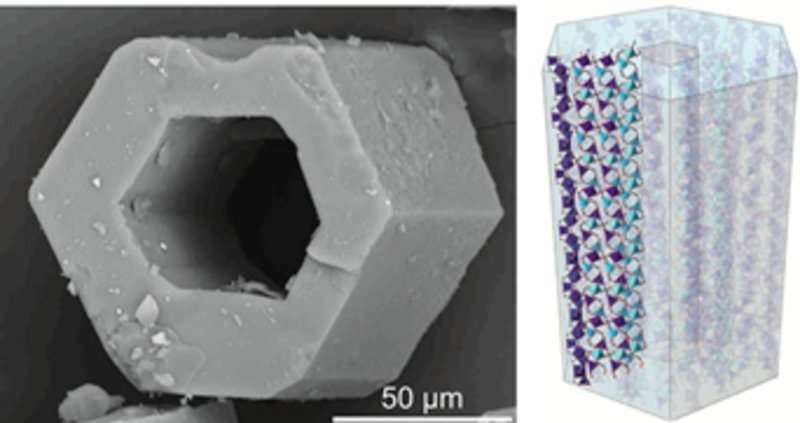Neutron diffraction experiments of materials with structures comprising multiple metal elements

Materials containing multiple metal elements are important for various applications as the combination of different metal cations provides new or enhanced properties, which cannot be obtained through the use of just one metal. A recent study involving neutron diffraction experiments has enabled the development of a new general strategy to produce complex materials with metal cation arrangements that can be virtually controlled on demand for desired applications; a result that will be of great importance in various fields.
The preparation of complex materials with structures made up of multiple metal cations occupying specific sites is a challenging task, as it involves simultaneously addressing the incorporation of different elements at exact positions. However, these multimetal materials are important in various different fields, as the combination of metal cations provides new or enhanced properties; something that cannot be achieved through the use of just one metal.
A frequent application of mixed-metal oxides and salts is being used as anode materials in batteries, due to superconductivity demonstrated by several multimetal families whose structures are composed of several cations combined. Other applications include doped metal oxides being used in optical devices and mixed-metal oxides being catalysts in key chemical transformation. However, the use of multimetal materials for these applications does not come with ease; synthesising new materials with structures where the disposition of the metal elements is highly controllable still remains a challenge. In fact, control over the arrangement of the elements in most existing multimetal materials has been limited or even inexistent to date. Moreover, there are limitations concerning the amount and nature of the elements that can be combined within one structure.
A class of crystalline materials, metal-organic frameworks (MOFs), are composed by a combination of metal clusters called secondary building units (SBUs) and organic linkers. While MOFs are constructed with just one metal cation traditionally, they have recently demonstrated the ability to incorporate multiple metal elements within a single crystal structure. However, there has been a lack of fundamental control on the disposition of the used metal elements in most of the reported systems to date.
A recent study conducted by an international collaboration of research institutes (Institut Laue-Langevin (ILL), Instituto de Ciencia de Materiales de Madrid and Instituto de Ciencia de Materiales de Aragon (both institutes of the Spanish National Research Council), IMDEA Energy Institute (ICMA) and Complutense University of Madrid) has reported how it is possible to use a MOF built with a rod-shaped inorganic SBU to combine multiple metal elements at precise positions. This results in materials with an arrangement of metal cations that can be controlled at atomic and mesoscopic scales.
A neutron powder diffraction study conducted at the ILL uncovered various possible atomic arrangements of the metal cations within the SBUs. The results of this work provide a new general strategy to produce complex multimetal materials with arrangements of metal cations that can be virtually controlled on demand for various desired applications. Given the properties of materials are dictated by their composition and precise atomic and mesoscopic structures, these findings will be of great relevance and importance in various fields.
Dr Ines Puente Orench, ILL Scientist and co-author of this study says: "Neutrons, and specifically the high-resolution multidetector D2B and the high-intensity powder diffractometer D1B at the ILL, were integral in this study as they allowed us to observe the precise locations of the metal elements in the crystallographic structure. These observations could not have been made using any other technique, as they would not have allowed the different metal elements to be distinguished. Considering the large number of existing MOFs made up of multiple SBUs, this method will be generalised to prepare new materials with compositions fit for certain applications where multiple metal cations can be arranged at desired and precise atomic positions."
More information: Celia Castillo-Blas et al. Addressed realization of multication complex arrangements in metal-organic frameworks, Science Advances (2017). DOI: 10.1126/sciadv.1700773
Journal information: Science Advances
Provided by Institut Laue-Langevin





















